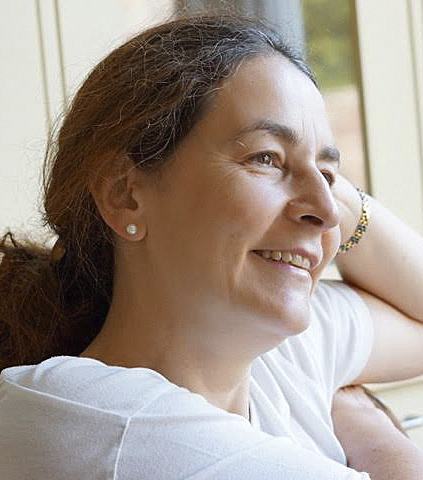He offered a homage to Beauty in which there was not only faith, but a discreet yet irresistible passion... The delicate precision of his architecture, the concision (without dryness) of his ideas will long guide us in our moments of anxiety.’ Such was the unique voice and lasting legacy of Gabriel Fauré, according to the composer Georges Auric.
Fauré represents the bridge in French music between the 19th and 20th centuries. Born into the era of Romanticism, he died in the age of jazz; and among his pupils at the Paris Conservatoire he counted such seminal figures as Maurice Ravel, Georges Enescu and Nadia Boulanger.
Outwardly traditional yet inwardly revolutionary, Fauré was never a composer to follow fashion at the expense of musical integrity. He wrote only one opera, Pénélope, and just a handful of works for orchestra; and unlike many of his contemporaries, he resisted the power of Wagner. He left some exquisite songs and chamber works, a startlingly unconventional Requiem and a plethora of piano pieces.
Add to his wayward inclination towards salon music Fauré’s unconventional educational background, from which the Paris Conservatoire and the Prix de Rome composition accolade were conspicuous by their absence, and it becomes all the more astonishing that he rose to be director of the Conservatoire itself. There he was nicknamed variously ‘Robespierre’ and ‘the Archangel’ as he swept away the institution’s stultifying traditions and laid the foundations for musical education in France through the 20th century.
Born in Pamiers in 1845, Fauré was the youngest son of a country schoolmaster. When he was nine, his father was advised to send him to the Niedermeyer School for budding church musicians in Paris – an education that would equip him for a suitable career in church music. It was there that the young Gabriel met the person who was to be his lifelong friend, mentor and champion: his piano teacher, Camille Saint-Saëns.
Virtually all of Fauré’s most important contacts came via his friendship with Saint-Saëns: the older composer helped Fauré find his first job, as a church organist in Rennes; in 1877 he was instrumental in Fauré’s appointment as choirmaster of the Madeleine, the church of Parisian high society where Saint-Saëns was organist; via Saint-Saëns Fauré also met Liszt and gained valuable advice from him over his Ballade, one of his most captivating early pieces.
In 1883 Fauré married Marie Fremiet, daughter of the sculptor Emmanuel Fremiet; he then spent most of his working years struggling to support his family – teaching, serving as choirmaster and as an inspector of music education and snatching time to compose during the summer holidays, when he would retreat from his hectic life in Paris and seek out lakeside settings, often in Switzerland. Stress, financial pressures, creative frustration and an unhappy marriage took their toll on Fauré in the form of migraines and spells of depression.
Worse was to come: in 1903 Fauré realised that he was losing his hearing. He suffered from a peculiar malady which distorted certain pitches: deep notes seemed a third too low and treble ones a third too high. ‘I’m knocked sideways by this disease which has attacked the very part of me I needed to keep intact,’ he wrote to his wife.
‘It’s disrespectful, or at least ill-judged, to compare myself with Beethoven... There are passages of music and isolated timbres which I simply can’t hear at all!’ For the last two years of his life, Fauré was stone deaf. When a huge benefit concert was given in his honour at the Sorbonne in June 1922, Fauré sat beside the president of the Republic to receive an ecstatic standing ovation for music of which he couldn’t hear a note.
Yet the inevitable comparison with Beethoven was not entirely inappropriate. From the early 20th century, rather than being swayed by his contemporaries, Fauré delved deeper into his own mind to draw out works that unfurled organically in spirit and structure, employing a harmonic sleight of hand derived from the combination he had always loved – tonality with modal influences.
In the greatest of his middle-period works of the 1890s, including the Sixth and Seventh Nocturnes and the Verlaine song cycle La bonne chanson, he had used these harmonic features as a gateway into ecstatic imaginary worlds filled with heady atmospheres. In his later works, however, he stripped his ideas to the bone and refined his textures.
His extraordinary Indian summer of late masterpieces included the Piano Trio, the Second Piano Quintet, the Second Cello Sonata and his last song cycle, L’horizon chimérique. His Nocturne No. 13, completed just weeks after the death of Saint-Saëns in 1921, is one of his most devastating statements.
Fauré embarked on this burst of creativity after his retirement from the Paris Conservatoire in 1920, devoting himself to composition. His late works, however, have been haunted by their image as ‘difficult’ music.
Many interpretations of pieces such as the Violin Sonata No. 2, the late Nocturnes and the String Quartet have accentuated their smoothness, introversion and contrapuntal complexity at the expense of their passion. The passion may only be found beneath the surface, but it’s there: and if the String Quartet and Piano Trio are performed with the vigour and contrasts of the Piano Quartet No. 1, a more complete vision of Fauré emerges, one of a composer who has blossomed into a new world.
Seemingly the most sensitive and decorous of composers, Fauré possessed an independence of spirit and a determination to effect change that marked him out as a radical in disguise. He composed one of the great Requiems, but one that caused controversy for marginalising the ‘Dies irae’ and accentuating the compassionate outlook that led to its description as ‘a lullaby of death’. Overall, the dreamy character of his music is prone to deceive, belying the smooth-operating, incisive intelligence working beneath.
We named Fauré one of the best French composers ever
Jessica Duchen
